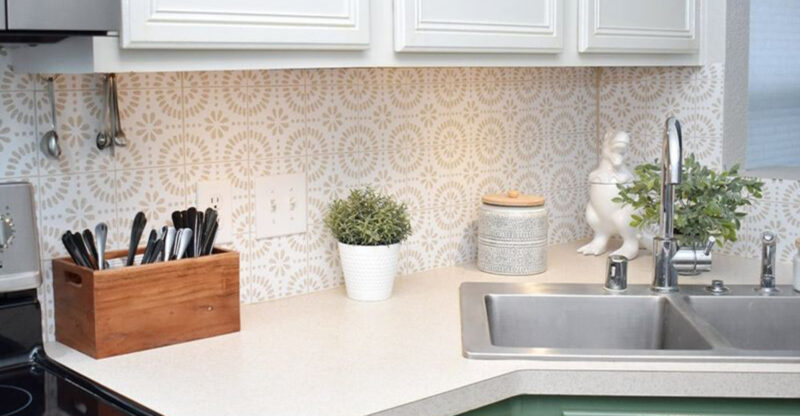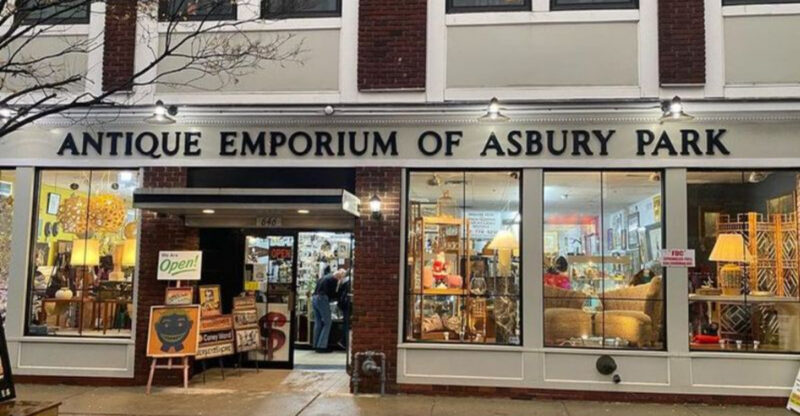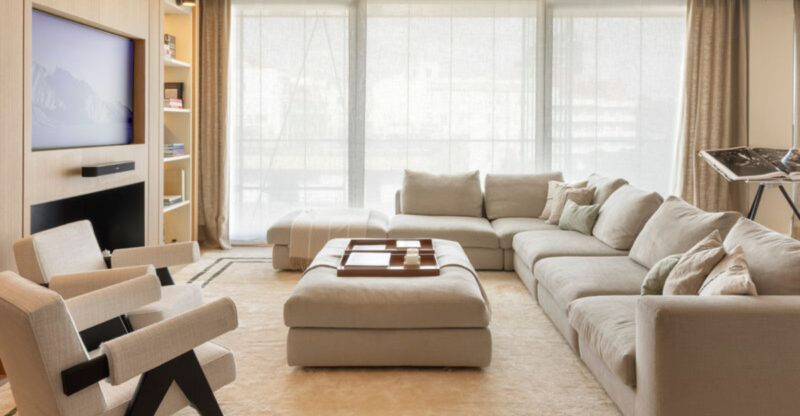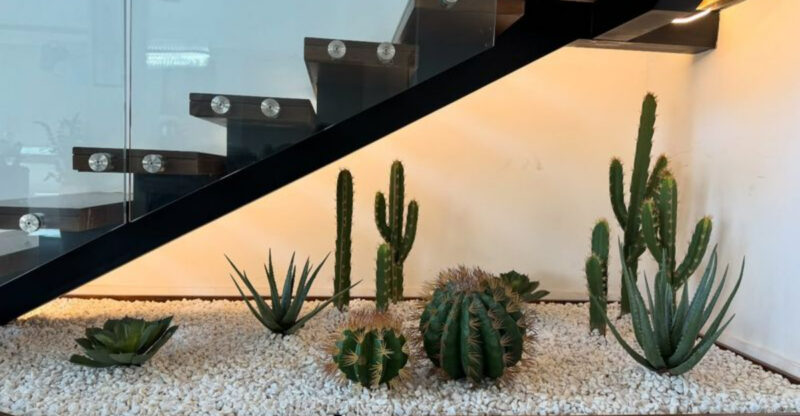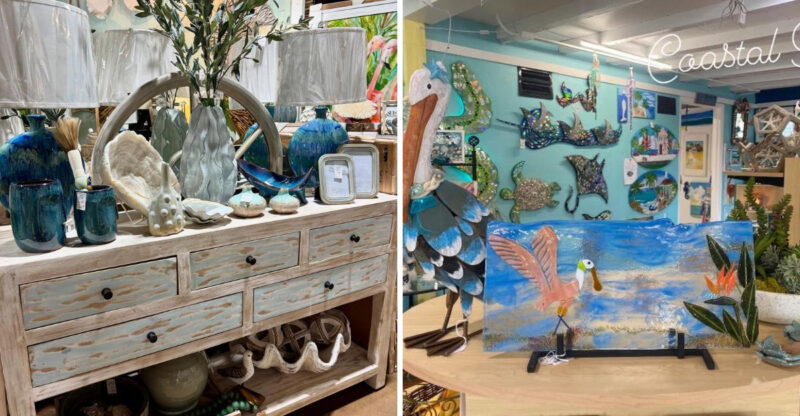11 Things Designers Say You Should Never Put In A Small Living Room (Plus 11 Even Worse Alternatives)

Decorating a small living room can feel like solving a puzzle where every piece matters. The wrong furniture or decor can make your cozy space feel cramped and cluttered in seconds. Interior designers have strong opinions about what works in compact spaces – and what definitely doesn’t.
I’ve gathered the top offenders that make small rooms feel tiny, along with alternatives that are even more problematic.
1. Oversized sectional sofas
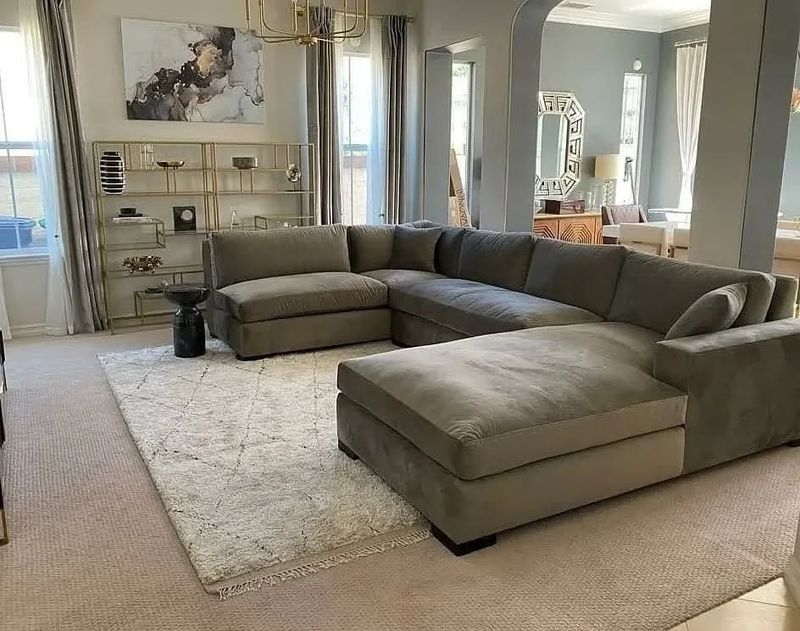
Your giant L-shaped sectional might be perfect for movie marathons, but it’s swallowing your small living room whole! When a sofa takes up three-quarters of your available floor space, movement becomes a gymnastic challenge. Scale is everything in compact spaces.
Consider how a bulky sectional forces everything else to compete for the remaining sliver of room. Guests will feel like they’re navigating an obstacle course just to find a seat.
2. Curved sectional sofas that eat up corners
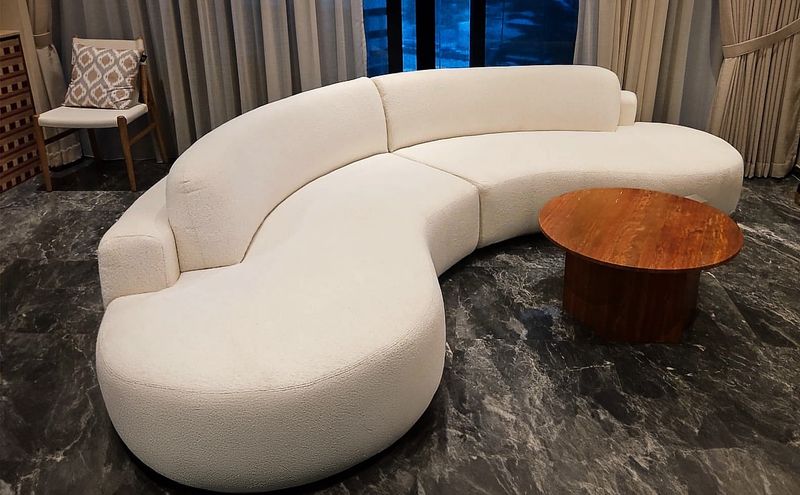
I recently visited a friend who installed a curved sectional in her tiny apartment. Talk about a space-waster! Those rounded edges created awkward dead zones that couldn’t be used for anything practical. The curved design forces you to position it away from walls, creating wasted space behind it.
Plus, these sofas typically seat fewer people than their straight-edged cousins despite taking up more room. Even worse than regular sectionals, they’re practically designed to make small rooms feel tiny.
3. Bulky entertainment centers
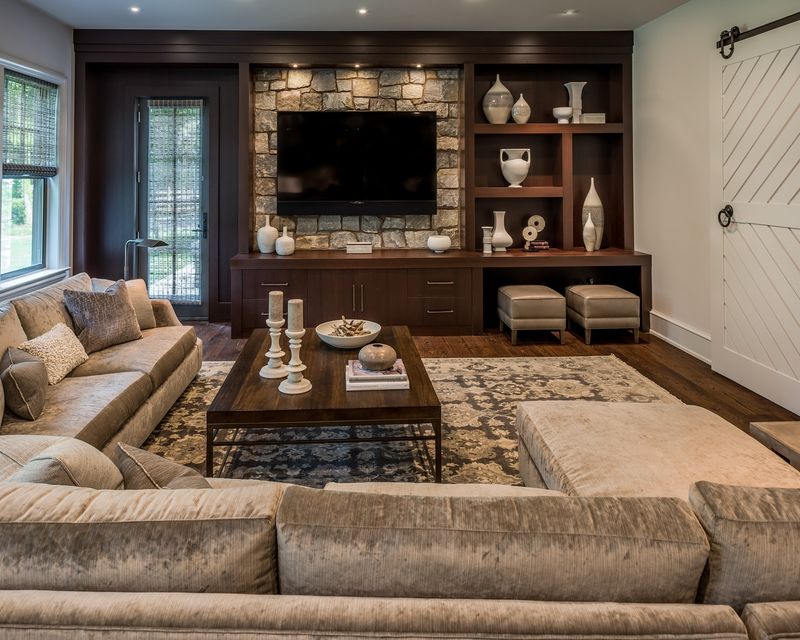
Remember those massive entertainment units from the 90s? Some folks still insist on squeezing these behemoths into tiny living spaces. A full entertainment center with shelving, cabinets, and display areas devours precious square footage.
These units create a visual weight that makes walls feel like they’re closing in. The dark, heavy appearance adds to the cramped feeling. Your TV doesn’t need its own piece of furniture that’s bigger than your sofa!
4. Multi-piece media walls
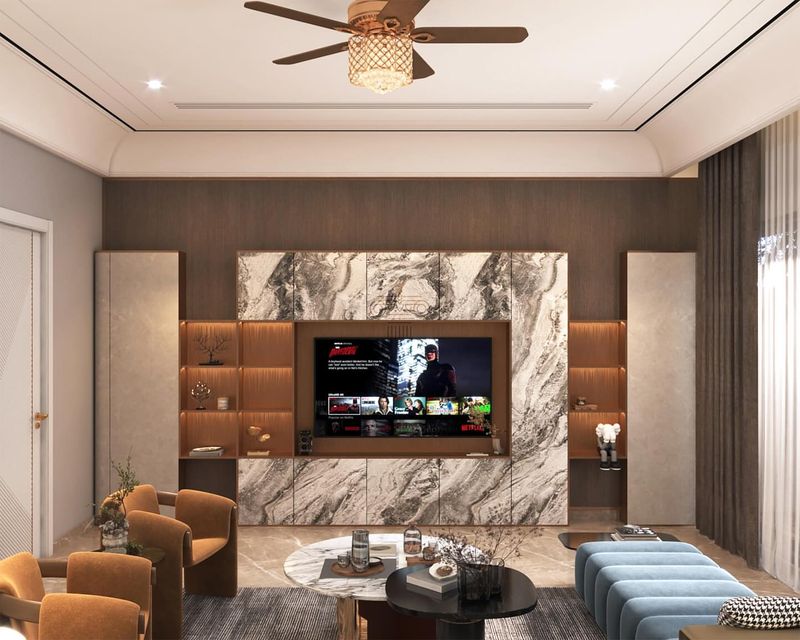
If standard entertainment centers are bad, multi-piece media walls are their evil cousins. These component systems with separate towers, bridges, and cabinets completely dominate small rooms. Walking into a room where every inch of wall space is covered by matching furniture pieces feels oppressive.
The visual weight is crushing. And those dust-collecting display cubbies filled with knickknacks? They create a busy, cluttered look that makes your brain feel as cramped as the room.
5. Dark, heavy curtains
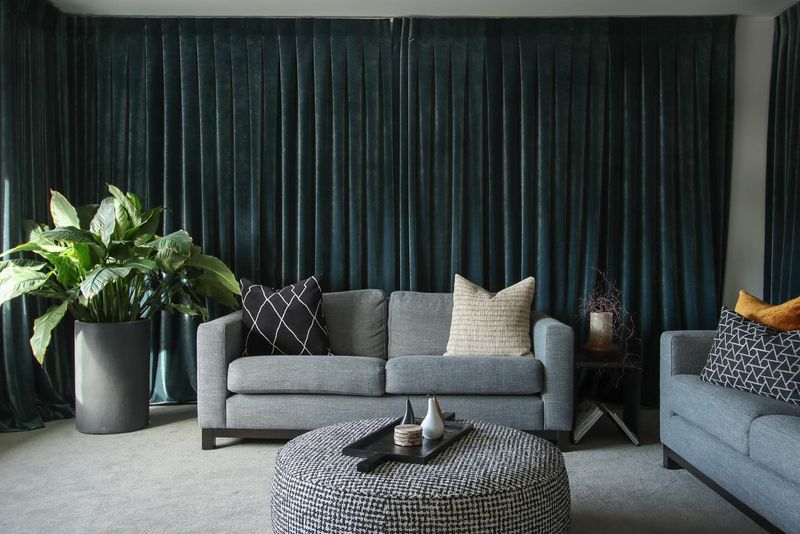
Heavy, floor-length curtains in dark colors are small room saboteurs! They visually weigh down your space and block precious natural light that could make the room feel larger. Those thick fabrics gather dust and make windows look smaller than they actually are.
When curtains puddle on the floor, they create a messy, crowded feeling. Your windows should be breathing life into your space, not suffocating it with fabric!
6. Velvet blackout drapes in deep colors
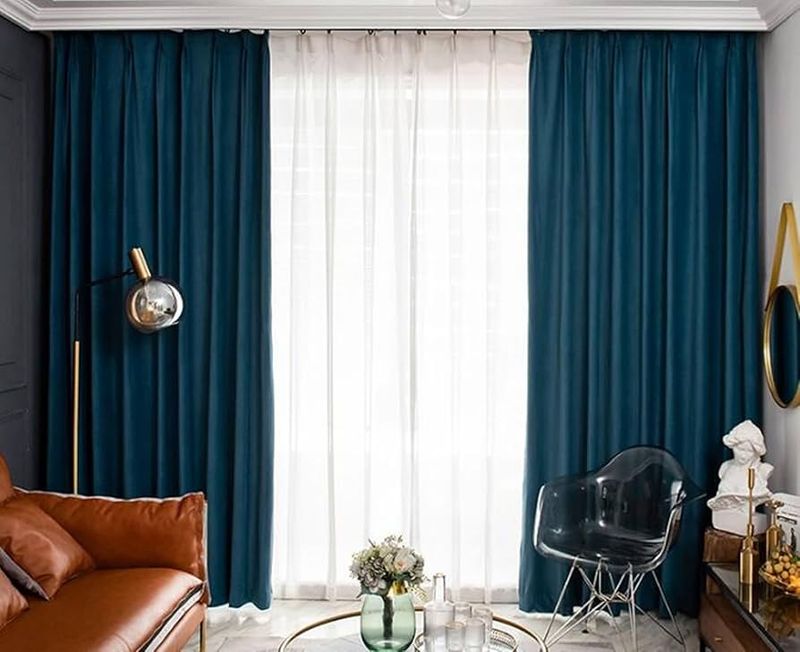
You might think luxurious velvet drapes add elegance, but in a small space, they’re suffocating! The thick pile of velvet combined with blackout lining creates window treatments that feel like walls. Deep jewel tones like emerald or sapphire might be trendy, but they absorb light rather than reflect it.
The heavy visual weight pulls your room down. Add in the dust-collecting properties of velvet, and you’ve got window treatments that make your room feel like a tiny, stuffy theater.
7. Large coffee tables with sharp corners
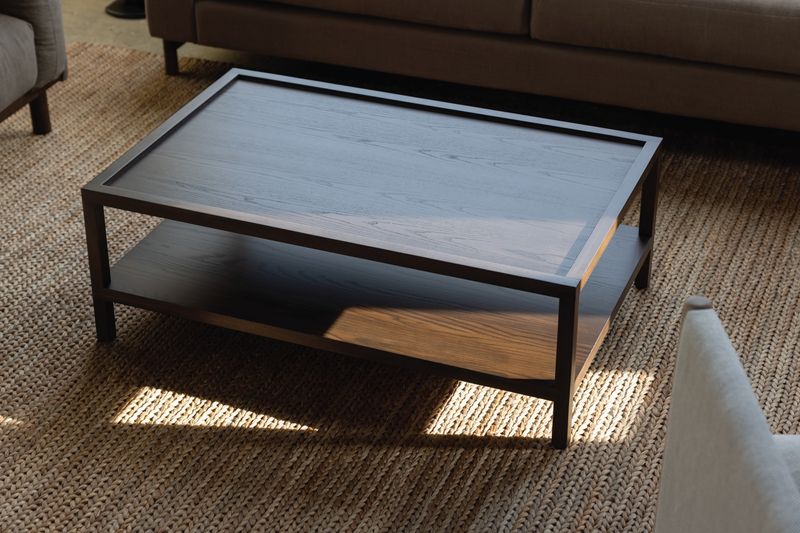
Ouch! Those bruised shins from navigating around a massive coffee table are telling you something – it doesn’t fit! Big tables with sharp corners become hazards in small spaces where pathways are already tight. A bulky coffee table forces people to squeeze past furniture or take awkward routes across the room.
The visual heaviness of a large table makes your seating area feel cramped. Plus, those sharp corners are particularly problematic when every movement in the room requires careful navigation.
8. Glass-top coffee tables with heavy bases
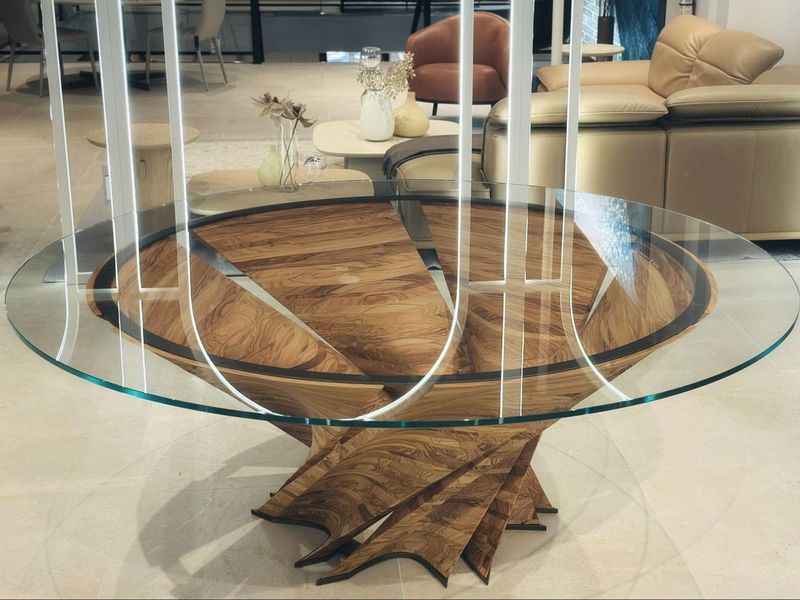
The glass-top trick doesn’t fool anyone when it’s sitting on a chunky, ornate base! These tables create a strange visual disconnect – the transparent top suggests lightness while the substantial base screams “I’m taking up space!”
Cleaning fingerprints becomes a daily chore with glass tops. The reflective surface also doubles the visual appearance of clutter. Add a heavy marble or carved wood base underneath, and you’ve created a piece that manages to be both visually confusing and physically imposing in your limited space.
9. Tall bookcases that overpower the space
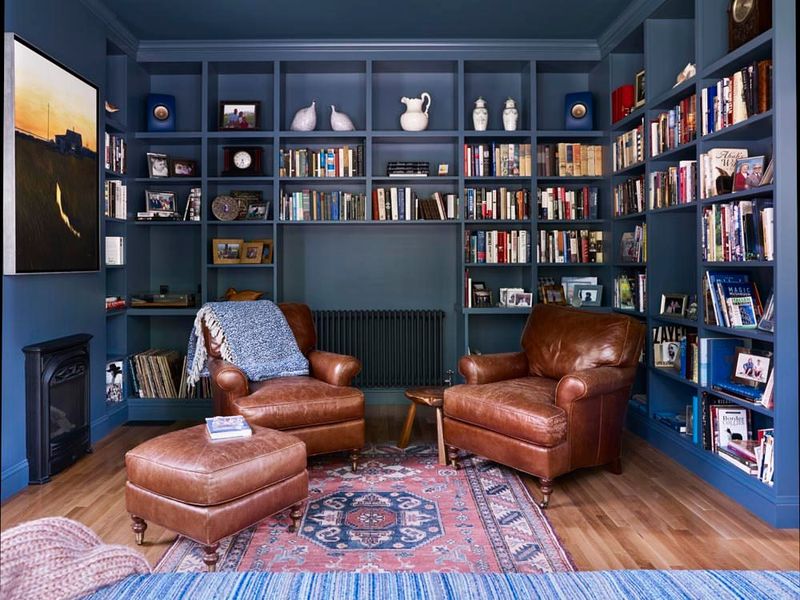
Floor-to-ceiling bookcases might work in a library, but in your tiny living room? They loom over everything like furniture skyscrapers! Tall vertical pieces draw the eye upward but also create imposing walls that make the room feel narrower. When filled with books and objects, these towering units become visually heavy.
They cast shadows and create dark corners. The proportional mismatch between a giant bookcase and a small room is immediately apparent – like wearing shoes three sizes too big.
10. Wide ladder shelves that lean awkwardly
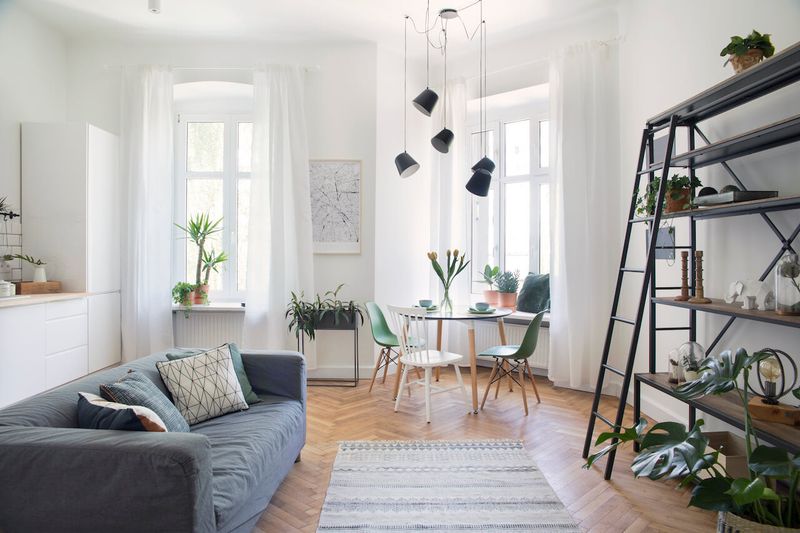
Many people think those trendy ladder shelves are space-savers, but the wide ones are actually space-wasters! Their angled design requires clearance from the wall, creating a triangular dead zone behind them that can’t be used for anything. The leaning design often feels unstable in small spaces.
Items frequently slide off the angled shelves. When you bump into them (which happens constantly in tight quarters), everything shifts. They’re basically wobbly dust collectors taking up floor space you can’t afford to lose.
11. Low-hanging chandeliers or large pendant lights
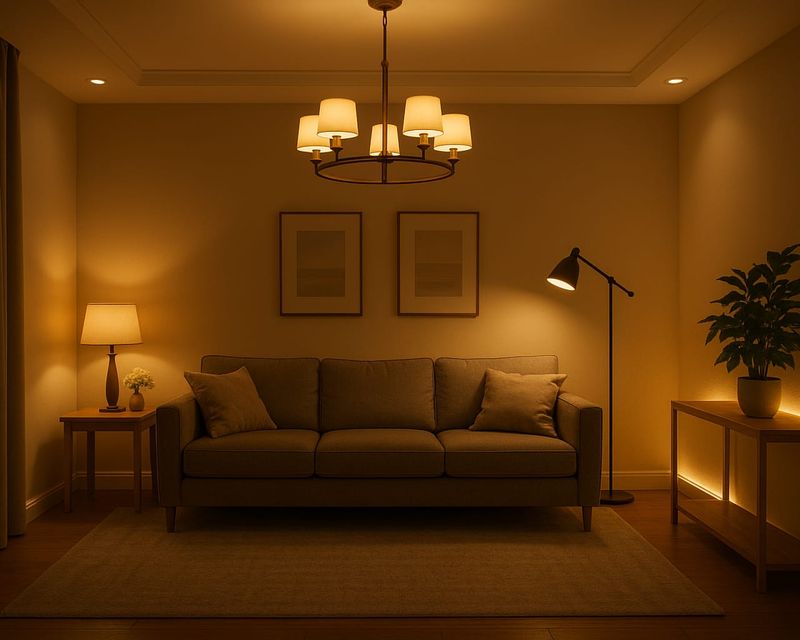
That statement chandelier you fell in love with is a hazard in your small living room! Low-hanging light fixtures create obstacles that tall guests will hit their heads on – I’ve seen it happen! Visually, large pendants and chandeliers can overwhelm a compact space.
They create a focal point that’s too dominant and draw attention to the ceiling height limitations. The shadows they cast often create weird patterns that make the room feel smaller rather than enhancing the space.
12. Low-slung floor lamps with oversized shades
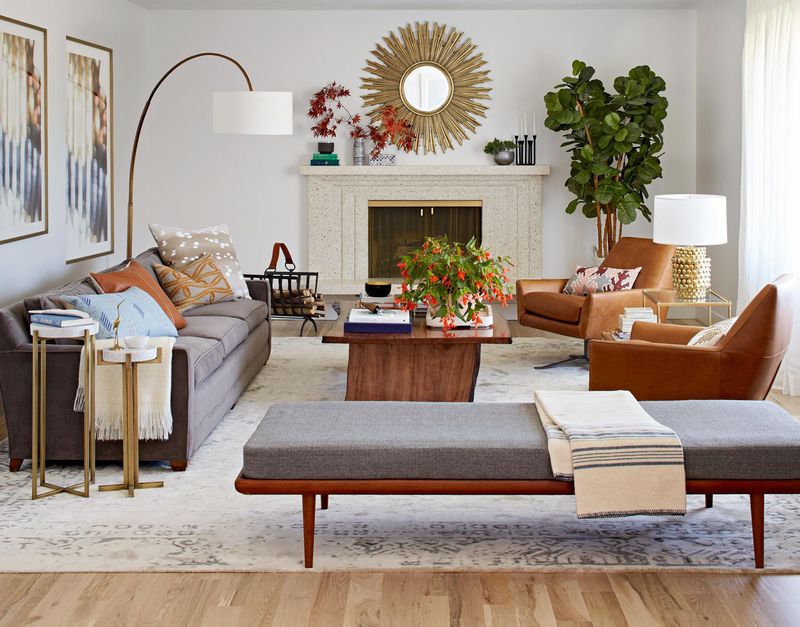
Floor lamps with massive drum shades might look great in furniture showrooms, but they’re space-hogging nightmares in small living rooms! These lamps typically have a wide footprint and create visual bulk at eye level – exactly where you don’t need it.
The oversized shades block sightlines across the room. Their low-hanging position means they’re constantly in your peripheral vision. You’ll find yourself bumping the shade when you walk by or reach for something. They manage to be both a physical and visual obstacle in your precious square footage.
13. Too many decorative pillows
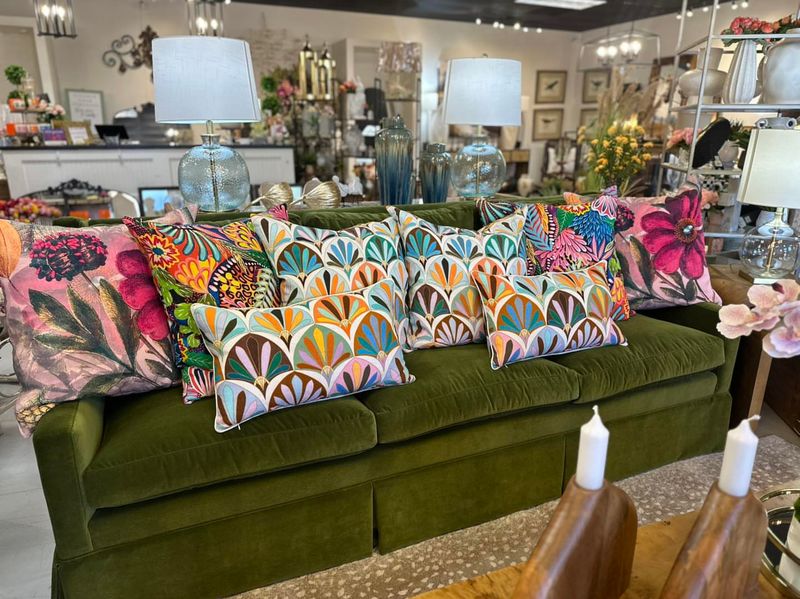
Your sofa isn’t a pillow storage facility! When decorative pillows occupy more space than actual seating, you’ve crossed into problem territory. Each extra pillow steals inches from an already limited seating area. Guests shouldn’t have to perform a pillow removal ceremony before sitting down.
The visual clutter of multiple patterns, textures, and colors in a small space can be overwhelming. Not to mention, all those pillows collect dust and need regular cleaning or fluffing to look presentable.
14. Pillows in mismatched bold patterns
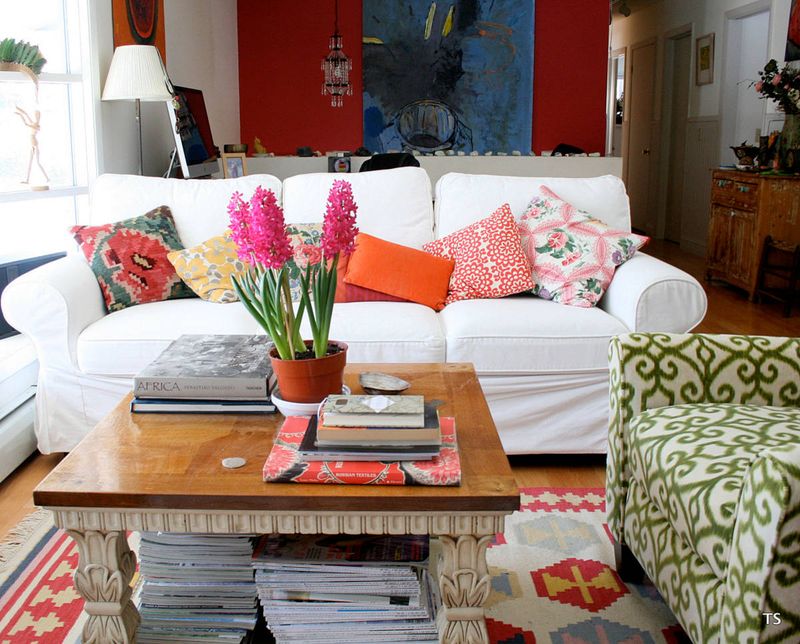
Going pillow-crazy with clashing patterns is like visual chaos in a small room! When every pillow screams for attention with bold geometrics, florals, and abstracts that don’t coordinate, your eyes have nowhere to rest. The competing patterns create visual noise that makes the space feel busy and smaller than it is.
Your brain has to work overtime to process all the conflicting visual information. Even worse than too many pillows are too many LOUD pillows that don’t relate to each other in any cohesive way.
15. Wall-to-wall carpeting in dark shades
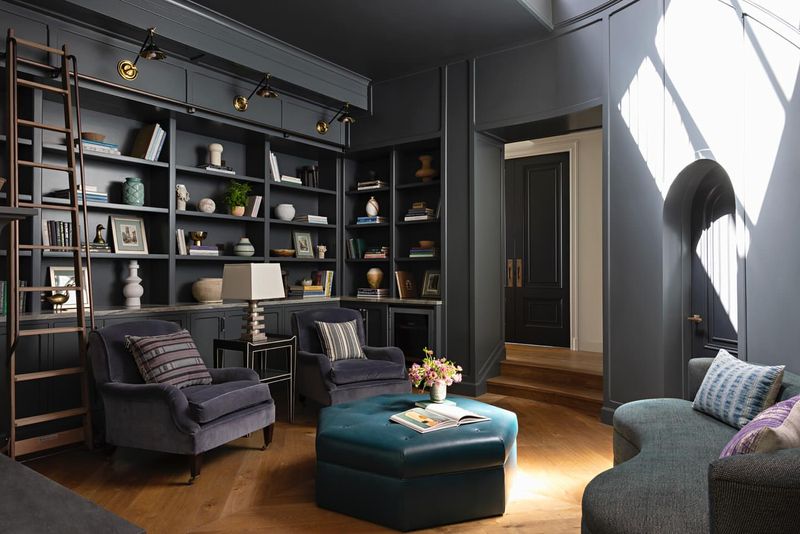
Dark wall-to-wall carpeting is the quickest way to make your small living room feel like a cave! Dark floors absorb light instead of reflecting it, making the entire space feel smaller and more enclosed. Wall-to-wall carpet in general limits your ability to define zones in a compact space.
Dark colors show every speck of dust and lint. They also make furniture look like it’s floating in a dark void rather than being grounded in a well-designed room.
16. Shag rugs in high-traffic areas
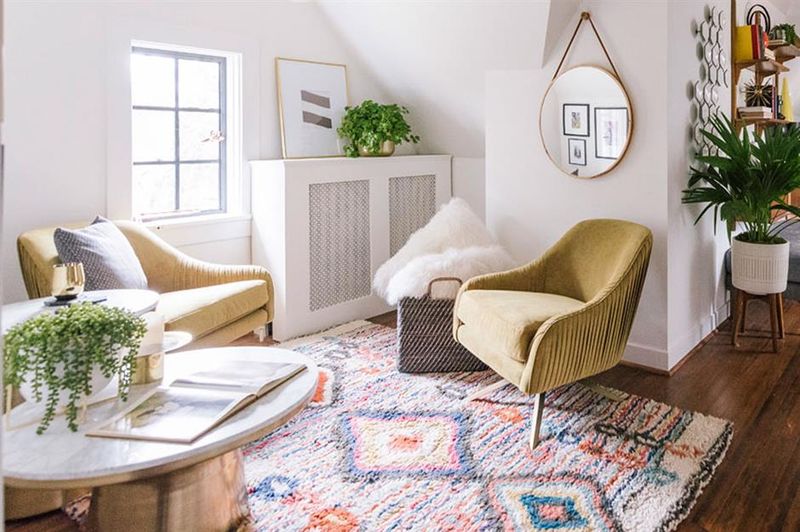
Remember the 70s? Shag rugs might be making a comeback, but they’re a nightmare in small spaces where every inch gets foot traffic! The long fibers trap dust, crumbs, and pet hair like nothing else. Cleaning becomes a major ordeal.
The thick pile makes moving furniture difficult and creates tripping hazards. Visually, a bulky shag rug makes the floor space appear smaller and more cluttered. Plus, those fibers get matted down quickly in areas where people actually walk, creating worn paths that look shabby.
17. Glossy finishes that reflect clutter
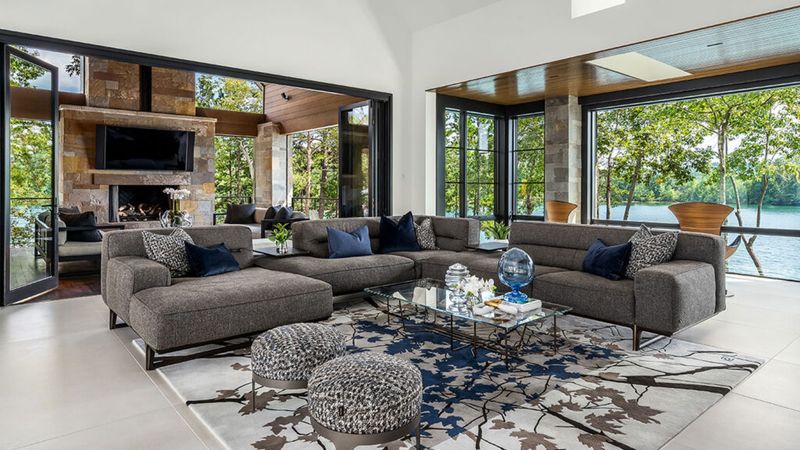
Those shiny lacquered furniture pieces double the visual clutter through reflections! In a small room, glossy surfaces act like funhouse mirrors, bouncing images of everything around them and creating visual chaos. High-gloss finishes show every fingerprint, dust particle, and smudge.
They create distracting glare from windows and light fixtures. What seemed sleek and modern in the showroom quickly becomes a maintenance headache that makes your small space feel busy and disorganized.
18. High-gloss lacquered walls
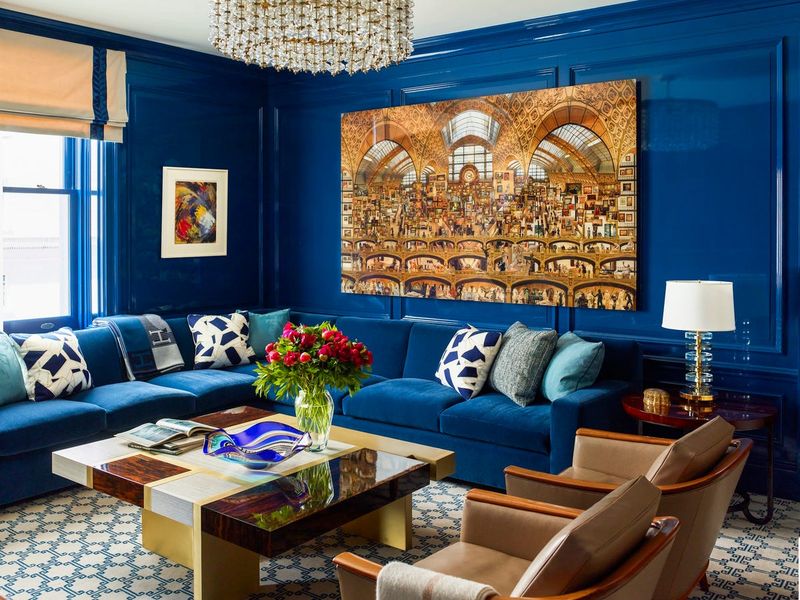
Taking glossy to an extreme, high-shine lacquered walls are like living inside a mirror ball! Every imperfection in your walls becomes magnified under that reflective finish. The intense shine creates disorienting reflections from every angle.
Light bounces unpredictably, creating hot spots and glare. Any wall texture shows through dramatically. The maintenance is also intense – every handprint, scuff, and speck of dust stands out like a spotlight. It’s like turning your small room into a disorienting, high-maintenance fun house.
19. Loud, oversized wall art
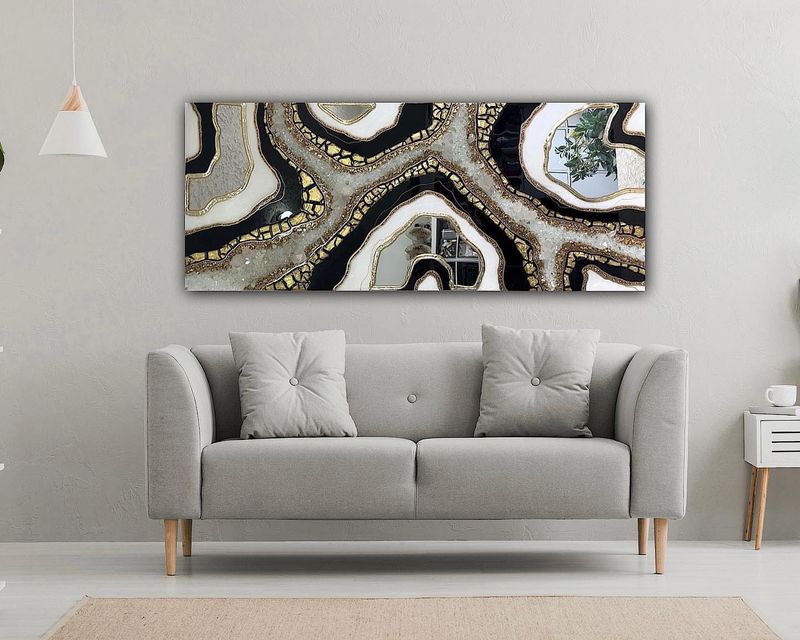
Massive, busy artwork overwhelms small walls and throws off the room’s proportions! When the art is bigger than the furniture beneath it, your space feels unbalanced and chaotic. Bold, high-contrast pieces with lots of colors and movement can be visually exhausting in a compact space.
Your eyes need somewhere to rest. Large-scale art with busy patterns creates the illusion that the walls are closing in, making your already small room feel even more confined.
20. Wall decals trying to mimic art
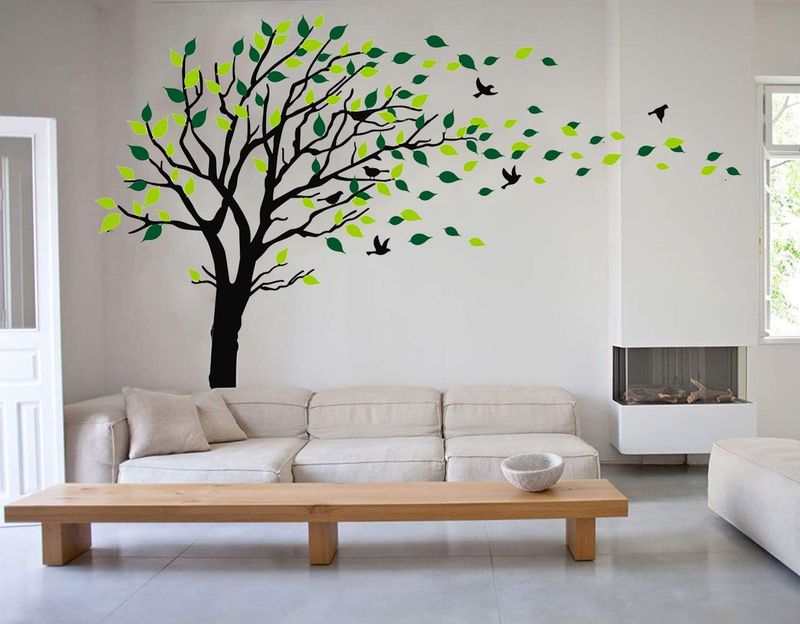
Those giant tree silhouettes or inspirational quote decals are even worse than oversized art! Wall decals often look cheap and dated, especially when they cover entire walls in small rooms. Large-scale decals break up visual flow and make walls feel choppy.
They draw too much attention to themselves in a space where simplicity would be better. Most look obviously fake up close. The peeling edges that inevitably develop over time create a sad, neglected appearance that’s worse than having bare walls.
21. Full-length mirrors placed behind furniture
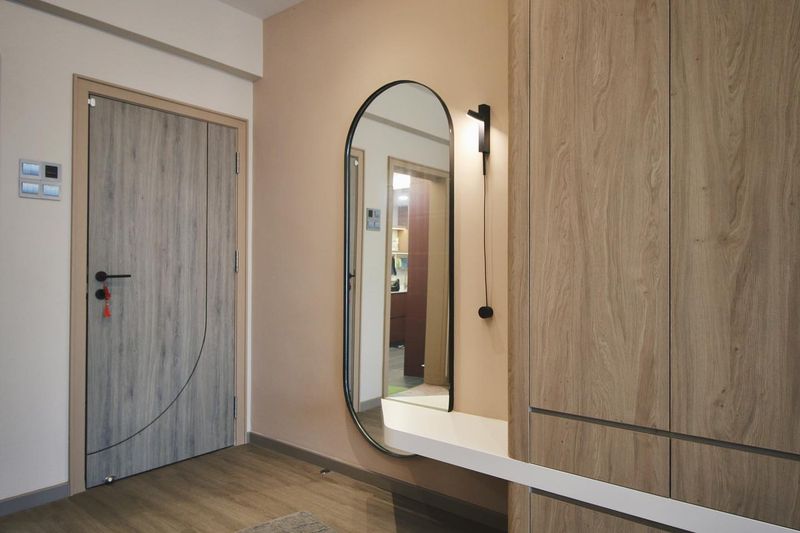
Mirrors can make rooms feel larger, but not when they’re hidden behind furniture! Placing a full-length mirror where it’s partially blocked creates a strange, disjointed reflection that’s more confusing than expansive. These awkward placements mean you only see fragments of the room reflected.
The visual interruption of furniture cutting across mirror reflections creates a cluttered, chopped-up feeling. Plus, mirrors behind seating areas often reflect the backs of people’s heads – not exactly the most attractive or useful view.
22. Mirrored furniture that adds visual noise
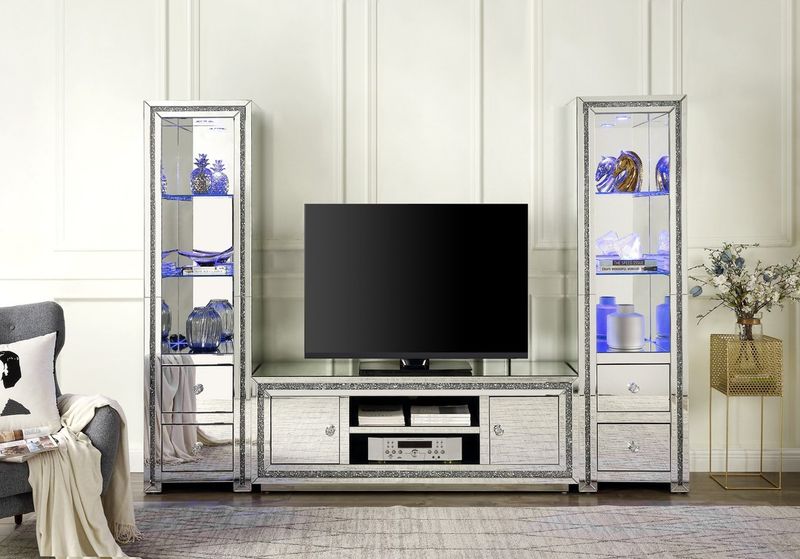
Mirrored dressers and tables might seem like smart space-enhancers, but they’re actually visual chaos creators! Each reflective surface multiplies the appearance of clutter and creates confusing, fragmented reflections. Fingerprints and dust show up instantly on mirrored furniture.
The reflections can be disorienting as you move around the room. Rather than making your space feel larger, these pieces create a busy, carnival-like atmosphere where your eye doesn’t know where to focus. They’re maintenance nightmares that actually make small spaces feel more cluttered.

